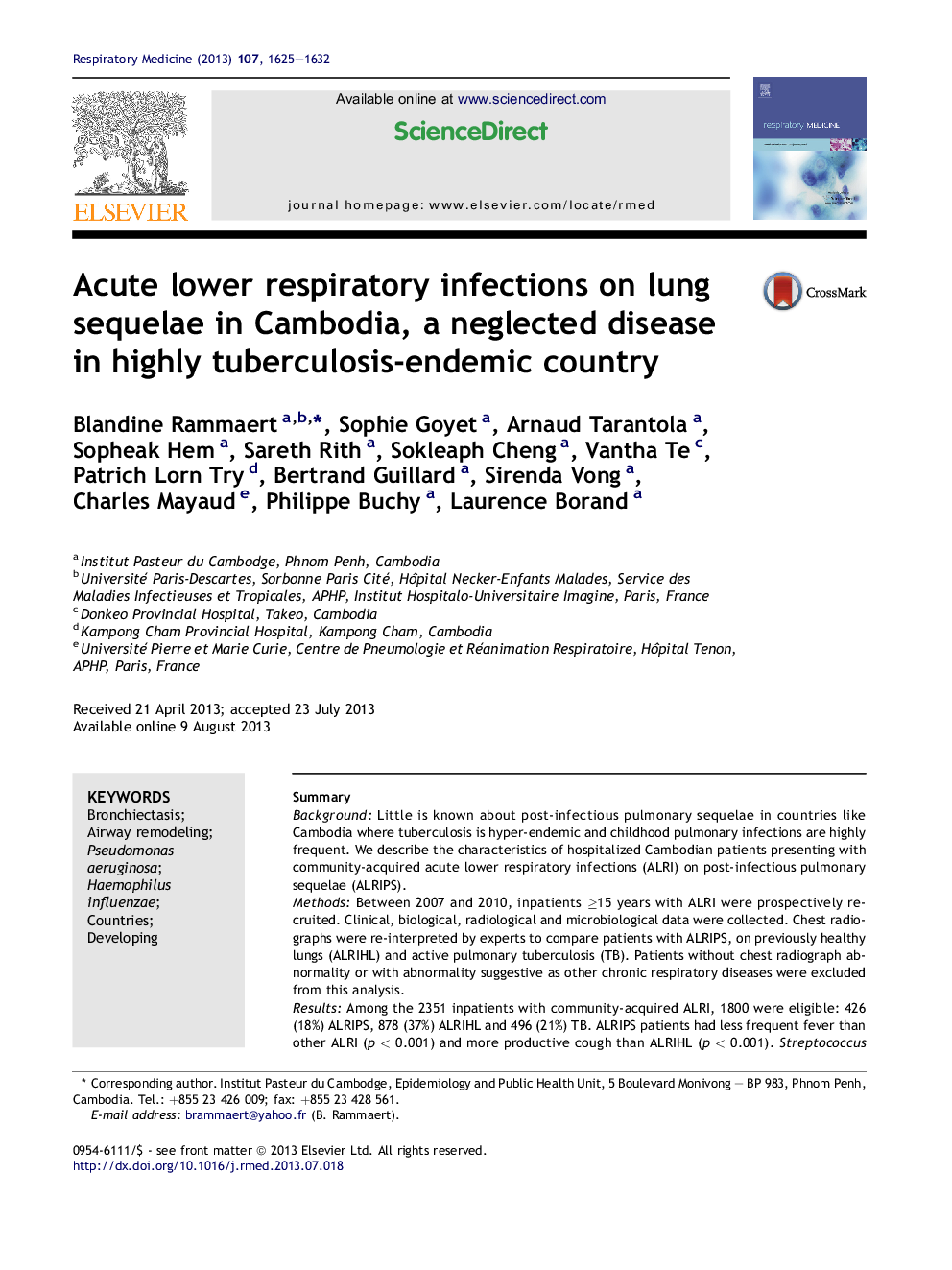| Article ID | Journal | Published Year | Pages | File Type |
|---|---|---|---|---|
| 6242432 | Respiratory Medicine | 2013 | 8 Pages |
SummaryBackgroundLittle is known about post-infectious pulmonary sequelae in countries like Cambodia where tuberculosis is hyper-endemic and childhood pulmonary infections are highly frequent. We describe the characteristics of hospitalized Cambodian patients presenting with community-acquired acute lower respiratory infections (ALRI) on post-infectious pulmonary sequelae (ALRIPS).MethodsBetween 2007 and 2010, inpatients â¥15 years with ALRI were prospectively recruited. Clinical, biological, radiological and microbiological data were collected. Chest radiographs were re-interpreted by experts to compare patients with ALRIPS, on previously healthy lungs (ALRIHL) and active pulmonary tuberculosis (TB). Patients without chest radiograph abnormality or with abnormality suggestive as other chronic respiratory diseases were excluded from this analysis.ResultsAmong the 2351 inpatients with community-acquired ALRI, 1800 were eligible: 426 (18%) ALRIPS, 878 (37%) ALRIHL and 496 (21%) TB. ALRIPS patients had less frequent fever than other ALRI (p < 0.001) and more productive cough than ALRIHL (p < 0.001). Streptococcus pneumoniae, Haemophilus influenzae, and Pseudomonas aeruginosa accounted for 83% of ALRIPS group positive cultures. H. influenzae and P. aeruginosa were significantly associated with ALRIPS compared with ALRIHL. Treatment was appropriate in 58% of ALRIPS patients. Finally, 79% of ALRIPS were not recognized by local clinicians. In-hospital mortality was low (1%) but probably underestimated in the ALRIPS group.ConclusionALRIPS remains often misdiagnosed as TB with inappropriate treatment in low-income countries. Better-targeted training programs would help reduce the morbidity burden and financial costs.
